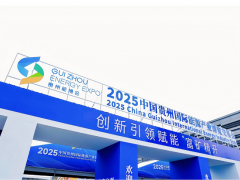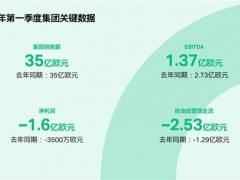?能源轉型的不確定性不斷增加,阻礙了油氣公司增加支出
?清潔能源解決方案投資的戰略選擇、應對脫碳壓力以及投資組合的重新定位將是明年所有油氣公司的關鍵主題
?WoodMackenzie:企業將在上游脫碳領域投入更多資金
據油價網2021年12月27日消息,全球上游行業明年將出現反彈,屆時勘探和生產的總投資有望三年來首次超過4000億美元。然而, Wood Mackenzie在其2022年全球上游前景報告中表示,盡管現金流創歷史新高且油價超過每桶70美元, 但再投資率將在 2022 年保持在接近歷史低位的水平,因為公司將保持支出紀律,并更加關注氣候和股東對脫碳業務的壓力。
在經歷了2020年的崩盤和危機以及2021年的復蘇之后,如今,油氣行業的現金流創下或接近紀錄。
資本約束盛行
然而,現金流正以股票回購和提高股息的形式分配給股東,而不是大幅增加鉆井活動。
大型石油公司利用高現金流回購股票和提高股息并不是什么新鮮事。今年的情況表明,美國頁巖氣開發也以回報投資者為重點,放棄了無休止的鉆探,并將所有現金流(甚至是借款投資)投入到新井中。
盡管油價在過去六個月的大部分時間里都保持在每桶70美元以上,但以頁巖油為主的美國生產商、國際石油巨頭和國家石油公司(NOC)仍對上游支出保持謹慎。
Wood Mackenzie表示,到2022年,資本約束仍將是上游油氣行業的一大主題。明年,全球上游投資總額將增長9%,達到4000億美元以上。
這將是自2019年以來,上游總支出首次超過4000億美元。
WoodMac的數據顯示,盡管預計明年的投資將會增加,但全球再投資率(按資本投資除以稅前營業現金流計算)將保持在接近歷史低點的水平。
在大型石油公司中,如今沒有人在投資上大肆揮霍,這與2015年價格暴跌之前的幾年不同,當時各公司的支出定位在油價會一直維持在每桶100美元。
當然,與2021年和2020年相比,五大石油巨頭——埃克森美孚、雪佛龍、殼牌、bp和道達爾能源——2022年的資本支出都將更高,但遠不及2014年的水平。資本約束仍然是所有財報發布和電話會議的關鍵詞,在分配創紀錄的現金流時,更高的股息和股票回購是優先考慮的。
五大國際公司也在提高低碳能源的資本支出,其中包括美國的超級巨頭,它們與歐洲競爭對手不愿意投資任何太陽能和風力發電的戰略不同,相反,埃克森美孚和雪佛龍計劃將重點放在可再生燃料和碳捕集與封存(CCS)上,這既是為了減少各自的碳足跡,也是為了在高度工業化的地區合作發展區域性的CCS中心。
2022年行業現金流可能達到1萬億美元
“布倫特原油價格約為70美元/桶,油氣現金流將接近歷史最高水平。如果油價達到80美元/桶,現金流將飆升至1萬億美元(包括稅后、資本支出后、融資前和股息)。”
WoodMac表示,盡管現金流創紀錄,但由于氣候變化和股東壓力,油氣行業明年的不確定性將達到峰值。該行業面臨著越來越大的壓力,需要減少排放,并向投資者表明,在全球脫碳進程中,它可能是解決方案的一部分,而不是問題的一部分。
盡管明年現金流可能創歷史新高,但對許多利益相關者、甚至一些首席執行官來說,該行業的風險大于其上行空間。這種緊張局勢將定義2022年。
不確定性
清潔能源解決方案投資的戰略選擇、應對脫碳壓力和投資組合重新定位將成為明年所有石油和天然氣公司的關鍵主題——從超級巨頭和國家石油公司到美國獨立石油和天然氣生產商,Wood Mackenzie企業研究高級副總裁Tom Ellacott在最近的一份報告中對2022年的情況進行了展望。
“企業將向上游脫碳投入更多資金。增加產品銷量的增值解決方案將繼續引領潮流,但CCS項目將獲得動力并吸引新的參與者,”Wood Mackenzie的McKay在WoodMac的《2022年全球上游展望》中表示。
該能源研究公司預計,到2022年,運營商將批準40多個項目,每個項目的產量超過5000萬桶油當量,其中低盈虧、低碳的深水項目將主導綠地最終投資決策。
上游油氣行業明年將出現反彈,但4000億美元的總投資仍將落后于在幾年內避免供應短缺所需的約5400億美元。此外,此外,脫碳壓力還將影響該行業在 2022 年和長期的未來投資選擇。
裘寅 編譯自 油價網
原文如下:
A Look At Big Oil’s Spending Plans For 2022
Mounting uncertainty about the energy transition keeps oil and gas companies from spending more
Strategic choices in investment in clean energy solutions, responding to the pressure to decarbonize, and portfolio repositioning will be next year’s key themes for all oil and gas companies
WoodMackenzie: Companies will allocate more capital to upstream decarbonisation
The global upstream sector is set for a rebound next year, when overall investment in exploration and production is expected to exceed $400 billion for the first time in three years. Yet, despite record high cash flows and oil at over $70 a barrel, reinvestment rates will stay at near record low levels in 2022, as companies will maintain discipline in spending and pay more attention to climate and shareholder pressure to decarbonize operations, Wood Mackenzie said in its Global Upstream Outlook 2022 report.
After a year of recovery in 2021, following the crash and crisis of 2020, the oil and gas industry is generating record or near record cash flows these days.
Capital Discipline Prevails
However, cash flows are being allocated to higher shareholder payouts in the form of share buybacks and raised dividends instead of significant increases in drilling activity. It’s nothing new for Big Oil to use high cash flows to repurchase shares and boost dividends. This year has shown that the U.S. shale patch has also pivoted to returns for investors and has abandoned the relentless drilling and investing all the cash flows (and even borrowing to invest) in new wells.
Shale-focused U.S. producers, as well as international majors and national oil companies (NOCs), continue to be careful with upstream spending, even if oil prices have held above $70 per barrel for most of the past six months.
According to Wood Mackenzie, capital discipline will still be a major theme in upstream oil and gas in 2022. Total global upstream investment is set to increase by 9 percent to over $400 billion next year.
This will be the first time that overall upstream spending will have exceeded $400 billion annually for the first time since 2019.
Despite the expected higher investment next year, the global reinvestment rate – calculated as capital investment divided by pre-dividend post-tax operating cash flow – will stay near record lows, according to WoodMac.
Among Big Oil, no one is splurging on investment these days, unlike in the years prior to the 2015 price crash, when companies were spending as if oil would stay at $100 a barrel forever.
Sure, capex for 2022 is set to be higher at all five majors – ExxonMobil, Chevron, Shell, BP, and TotalEnergies – compared to 2021 and 2020, but it’s nowhere near 2014 levels. Capital discipline is still the keyword in all earnings releases and calls, where higher dividends and share buybacks take precedence when it comes to allocating record cash flows.
The five largest international firms are also raising capital spending on low-carbon energy, including the U.S. supermajors who differ from their European competitors in strategy by not being willing to invest in any solar and wind power generation. Instead, Exxon and Chevron plan to focus on renewable fuels and carbon capture and storage (CCS), both to cut their own carbon footprint and to develop in partnership regional CCS hubs in heavily industrialized areas.
Industry Cash Flows Could Reach $1 Trillion In 2022
“At a Brent price of around US$70/bbl, oil and gas cash flows will be at near-record levels. At US$80/bbl, it would soar towards US$1 trillion (on a post-tax, post-capex, pre-financing and dividends basis),” Fraser McKay, Vice President, upstream research, at Wood Mackenzie, says.
Despite record cash flows, the oil and gas sector faces ‘peak uncertainty’ next year amid climate and shareholder pressure, WoodMac says. The industry faces increased pressure to reduce emissions and show investors it could be part of the solution – not the problem – in the global drive toward decarbonization.
Although cash flows could hit records next year, “for many stakeholders and even some chief executives, the sector’s risks outweigh its upsides. This tension will define 2022,” according to Wood Mackenzie’s McKay.
Uncertainties Mount
Strategic choices in investment in clean energy solutions, responding to the pressure to decarbonize, and portfolio repositioning will be next year’s key themes for all oil and gas companies—from the supermajors and the NOCs to the U.S. independent oil and gas producers, Tom Ellacott, Senior Vice President, Corporate Research, at Wood Mackenzie, wrote in a recent report with an outlook of what to expect in 2022.
“Companies will allocate more capital to upstream decarbonisation. Value accretive solutions, which increase product sales, will continue to lead the way, but CCS projects will gain momentum and attract new participants,” Wood Mackenzie’s McKay said in WoodMac’s Global Upstream Outlook 2022.
The energy research firm expects operators to sanction in 2022 more than 40 projects over 50 million barrels of oil equivalent (boe) each, with low-breakeven, low-carbon deepwater projects dominating greenfield final investment decisions (FIDs).
The upstream oil and gas industry is set for a rebound next year, but overall investment of $400 billion will still lag the needed around $540 billion to stave off a supply shortage within a few years’ time. In addition, the pressure to decarbonize would also shape the industry’s future investment choices, both in 2022 and in the long run.
免責聲明:本網轉載自其它媒體的文章,目的在于弘揚石化精神,傳遞更多石化信息,并不代表本網贊同其觀點和對其真實性負責,在此我們謹向原作者和原媒體致以敬意。如果您認為本站文章侵犯了您的版權,請與我們聯系,我們將第一時間刪除。







